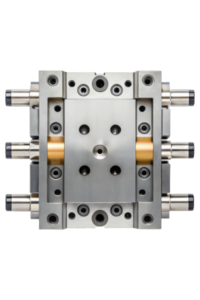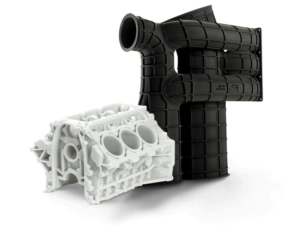Learn more about the knit lines in injection molding
Plastic injection molding is an efficient and affordable process for designing custom prototypes. However, product designers relying on this molding process encounter different challenges while creating molded components. Undesirable knit lines, warping, and stress factors are some problems of plastic injection molding projects. In this blog, we’ll talk all about knit lines in injection molding so you can learn about the causes and solutions for these knit lines.
Cooling the resin of your injection molding project
Molding is a process where the resin gets converted into a molten state due to the application of heat. Then the resin is then poured into a mold to create a thermoplastic part. When the resin cools, professionals can inject it into the mold. Thus, the edge of the flow in this mold is the coolest part of the resin. However, it does not cause an issue in the case of the well-designed mold.
In a few instances, an obstacle leads to a segmentation of the resin flow. The divided parts meet again on another side of this obstacle. For instance, the core builds a rectangular hole in a plate. There are multiple surfaces to be met downstream. When the surfaces meld together, it results in the formation of a solid joint. However, too much cooling results in melding, and you will find a knit line.
More about the knit lines in injection molding
In a plastic injection-molded component, a knit line occurs when 2 different plastic flows emerge in a mold. They again get resolidified along the surface. Based on the resin temperature, filling speed, and resin, there is a variation in the knit lines. These defects are not visible, like small cracks in plastics. Knit lines result in the reduction of the mechanical properties of a product and can lead to breakage. Whether for functionality or cosmetic reasons, it is essential to know why the problem has turned up and how you can reduce its effect.
The molding parameters make a difference in the shape and size of the knit line. However, the geometrical details of the part also affect the location of the knit lines. The way how the flow of plastic rejoins results in the knit lines. Thus, you will find a knit line downstream from holes across the part. For the same reasons, knit lines are present between 2 gates.
The best injection molding professionals try to reduce the appearance and prominence of knit lines. In fact, they have to balance it with some other challenges. For instance, they should avoid sink and blush issues to achieve surface texture.
How to prevent knit lines
There is no proven way of preventing them. Nevertheless, you may reduce the risk of knit lines by making the parts more attractive and stronger.
You can use simulation to identify the right location of the gates. The knit line reaches the parts, which have a low effect on the overall function and fit of the component.
A slight twist of the process will also minimize the risk. It is easy to adjust the mold temperature and some other settings. The filling speed is also customizable. You will find a significant difference in the overall appearance and visual beauty of knit lines.
Another option for you is to choose different materials. Some materials can result in weaker or stronger knit lines. For instance, thermoplastic olefin components break easily at the knit line. So, polypropylene parts can be a better alternative. Although PP is weaker, it is better than TPO.
It is important to check the fillers in materials. Most commonly, fiber fillers used for injection molding lower the strength at the meld lines and knit lines. The major reason behind it is that fibers cannot melt at a particular temperature like thermoplastics. That is why they cannot join back together. If you need fiber fillers, glass beads or short fibers will add strength. They will help in retaining the bond.
A valve gate control is another solution for the knit lines. While using different valve gates, it is important to control the time for each closing and opening activity. It will reduce the chance of knit lines appearing on the surface. Some manufacturers also use cavity pressure sensors to achieve this result.
Some important things to consider for reducing knit lines.
- Thicker walls lower the rate of cooling the resin. It will reduce the strength and appearance of knit lines.
- The resin chosen for injection molding makes a significant difference. For instance, unfilled materials make the knit line stronger. The strength of this defective line will get reduced with the higher quantity of filler content and longer fibers.
- Thermoplastic materials and other materials containing additives like lubricants, flame retardants, and mold releases will intensify the problem.
You can avoid knit lines and other defects in your molded parts by working with plastic injection molding professionals. Expert injection molders like Quickparts know how to minimize knit lines and move them to a less critical part.
Knit lines differ from meld lines
A meld line helps with remerging flow fronts if a feature in the part design divides the plastic flow. As the flow front merges together, the part feels the pressure.
On the contrary, a knit line occurs if the flow fronts meet together without getting merged.
Understand the minor difference to identify the defect in the plastic injection molded part.
Conclusion
Because we know now Knit lines in injection molding affect the quality of the parts and cannot be entirely avoided, it’s much more important to work with a partner who can minimize their appearance. Quickparts can provide expert plastic injection molding services and has a wealth of expertise regarding molding issues and their prevention of them. Submit your project today and get a quote for your next injection molding project with Quickparts.


